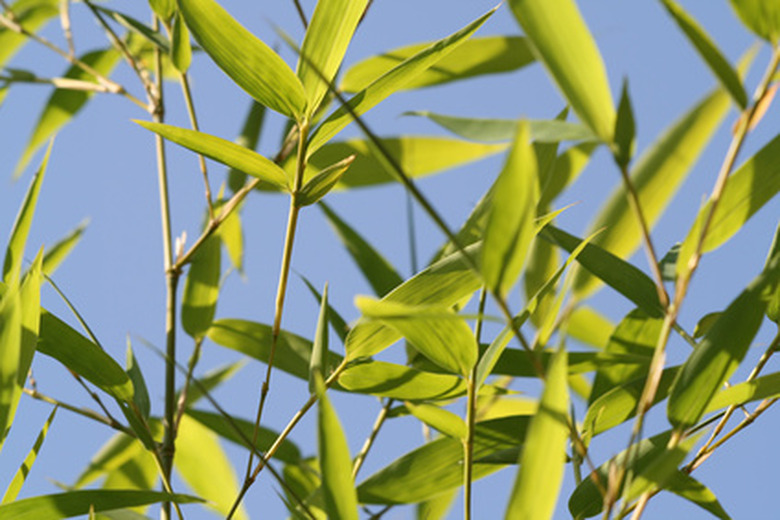Growing & Planting Bamboo In Arizona
Things Needed
- Rotary tiller
- Organic matter
- Metal rake
- Shovel
- Mulch
- Fertilizer
- Windscreen (optional)
Arizona has a diverse climate and soil preference across the state. This has allowed many species of garden flowers and grasses to be planted and cultivated, but rarely across the entire region. Bamboo thrives in the acidic loamy soil of Arizona and loves the full sun and warm temperatures that the Southwest produces. This woody-stemmed perennial grass comes in a variety of sizes and species, most of which blossom in Arizona's climate. Although bamboo only blooms flowers once every 50 years, according to the University of Arizona Cooperative Extension, it can be planted any time of year.
Step 1
Choose a location with full sun and little wind. Break up the soil with a rotary tiller or rake, adding organic matter to increase the pH of the soil. Bamboo thrives in acidic soil. Rake the organic matter into the soil.
- Arizona has a diverse climate and soil preference across the state.
- This woody-stemmed perennial grass comes in a variety of sizes and species, most of which blossom in Arizona's climate.
Step 2
Dig a hole large enough to hold the root system of the bamboo. Bamboo has rhizomes, or underground stems, from which it grows. Spread the rhizomes out in the hole and backfill with the removed soil. Layer mulch 2 to 3 inches deep around the bamboo plant. Water generously until the soil is moist.
Step 3
Allow fallen leaves to lie on the ground. These add additional nutrients to the soil and fertilize the bamboo's rhizomes.
- Dig a hole large enough to hold the root system of the bamboo.
- Layer mulch 2 to 3 inches deep around the bamboo plant.
Step 4
Provide fertilizer and water generously. Water twice weekly in mild weather and daily on hot and dry days. Avoid excessive wind from damaging the bamboo by providing a windscreen on windy days.
Step 5
Prepare for cooler nights in the fall with an added layer of mulch around the base of the bamboo. Provide an additional 2 to 3 inches of mulch to the plant base and water generously to keep the roots from freezing.
